NFL Nation reporters break down the moves they liked and the moves that might not work out for each of their teams.
AFC East | AFC North| AFC South | AFC West
NFC East | NFC North | NFC South | NFC West
AFC East

Buffalo Bills
Best move: Trading down from No. 10 to No. 27 yielded the Bills a third-round pick (No. 91) and, more importantly, a 2018 first-round pick from the Kansas City Chiefs. How the Bills use that extra first-rounder next April will define the success of that trade. If they can package that pick with their original 2018 selection and move up the board for a top quarterback -- USC's Sam Darnold and UCLA's Josh Rosen are projected as top picks -- it could be a franchise-altering move.
Riskiest move: Instead of keeping the No. 75 pick in the third round, the Bills packaged it with two fifth-round picks to move up to No. 63 to select offensive lineman Dion Dawkins in the second round. That three-for-one swap was a lot to give up for a team that needed as much young talent as it could get from a deep draft. Dawkins might become the Bills' starting right tackle, but Buffalo has depth needs across its roster that those extra picks could have helped fill. -- Mike Rodak

Miami Dolphins
Best move: First-round pick Charles Harris has the potential to be a good pass-rushing threat for many years. The defensive end has a relentless motor, good athleticism and a variety of moves to get to the quarterback. The biggest argument against Harris is that he will begin his NFL career behind Pro Bowler Cameron Wake, starter Andre Branch and veteran backup William Hayes. It could be a year or two before Harris becomes a starter.
Riskiest move: Second-round selection Raekwon McMillan has a lot to prove. McMillan is a natural middle linebacker who will either serve as a backup to Lawrence Timmons or try to make the transition to outside linebacker. Speed and quickness are question marks for McMillan if he moves to outside linebacker at the next level. The Dolphins also passed on Vanderbilt’s Zach Cunningham, who was rated higher than McMillan by most draft experts and appeared to be more of a natural fit for the Dolphins. -- James Walker

New England Patriots
Best move: Trading the No. 32 overall pick to the Saints for receiver Brandin Cooks. The potential impact of Cooks easily trumps anything the Patriots could have done at that spot in the draft. With three receivers selected in the top nine picks of the draft, it was a reflection of how the cost for top receivers is rising.
Riskiest move: The Patriots made only four picks, which makes this the smallest class in Bill Belichick’s 18 drafts with the team. They focused on known value in trading for Cooks, defensive end Kony Ealy and tight end Dwayne Allen and signing restricted running back Mike Gillislee, which depleted their draft capital. In a year in which many felt that the draft was deep, it’s possible that this overall approach could come back to haunt the team. -- Mike Reiss

New York Jets
Best move: Easy call: Safety Jamal Adams, chosen sixth overall. Wisely, the Jets resisted the temptation to trade down and took one of the premier players in the draft. Adams should be a Day 1 starter, and -- write this down -- he will eventually be the leader of the defense. He upgrades the Jets' secondary and the locker room. Sometimes you get lucky; few people thought he’d still be available at No. 6.
Riskiest move: General manager Mike Maccagnan traded back a franchise-record four times, which resulted in six picks in the fifth and sixth rounds. (He also dealt one pick for a 2018 fifth-rounder.) His new nickname: Mike Baccagnan. The question: Why? This was a deep draft, with a lot of talent in the third and fourth rounds. He traded out of the sweet spot, failing to add a much-needed cornerback until a couple of fliers in the sixth round. -- Rich Cimini
AFC North

Baltimore Ravens
Best move: Pass-rusher was the biggest need for the Ravens because Terrell Suggs turns 35 in October and Elvis Dumervil was cut. The Ravens were 1-7 when recording one or zero sacks last season. That’s why Baltimore was fortunate that an explosive edge rusher such as LB Tyus Bowser slipped into the second round. The former college basketball player totaled 16 sacks in his last 24 games and has tremendous upside.
Riskiest move: Taking the draft’s second-best corner at No. 16 overall isn’t typically regarded as a gamble. The risk here is the prospects Baltimore passed on for CB Marlon Humphrey. The Ravens had a choice of three Alabama players who were once regarded as top-10 talents -- tight end O.J. Howard, defensive end Jonathan Allen and inside linebacker Reuben Foster -- and instead selected a corner in the first round for the first time since 2011. -- Jamison Hensley

Cincinnati Bengals
Best move: Adding edge rushers Jordan Willis and Carl Lawson in the third and fourth rounds. No. 9 overall selection John Ross could end up being one of the best receivers in the draft, but he has a lot of durability concerns. The Bengals got a ton of value in Willis and Lawson, who were still on the board long after they were expected to be drafted. The Bengals were able to wait and get the pass-rushers they wanted instead of reaching for one early in the draft. Rushing the passer was a weak point for the Bengals last season, so Willis and Lawson figure to quickly become part of the rotation.
Riskiest move: Drafting running back Joe Mixon might be one of the riskiest moves of the entire draft. The Bengals are taking a chance on Mixon, who punched a woman and broke four bones in her face in 2014. The spotlight will be on Mixon for as long as he is in the NFL, so there is little room for error. The Bengals believe Mixon is sincere in his remorse. He is clearly talented and can do it all for the Bengals, but he will be under a microscope for the rest of his career. -- Katherine Terrell

Cleveland Browns
Best move: This is an easy choice: Drafting DeShone Kizer in the second round out of Notre Dame. The Browns couldn't leave this draft without a quarterback, and they got one with prototype size and arm strength. Kizer needs work on his footwork, fundamentals and reads, but he presented himself as a soft-spoken and humble man who is willing to do the work. The Browns could have taken Kizer at 25th overall or 29th or even 12th, in the first round, and nobody would have griped. Getting him in the second in addition to Myles Garrett and two other first-round picks makes this a successful draft.
Riskiest move: The words "pending charge" should never be associated with a draft pick, but that's true of DT Caleb Brantley, the team's sixth-round pick. Sashi Brown said the team will look into the incident in a Florida bar that led to a misdemeanor battery charge against Brantley, and if the team is not comfortable, Brantley will not be on the roster. The Browns have emphasized a certain kind of player the past two years, and taking one with this charge pending does not mesh. To the team, his talent was worth the risk, but if they decide not to keep him, it's a wasted draft pick. -- Pat McManamon

Pittsburgh Steelers
Best move: Second-round WR JuJu Smith-Schuster out of USC brings toughness and big-play ability to a crucial position. With uncertainty around Martavis Bryant, the Steelers needed a potential starter alongside Antonio Brown. Smith-Schuster can contribute right away. And he just turned 20, so there's plenty of room to grow.
Riskiest move: The Steelers like CB Cameron Sutton's football savvy as a four-year starter at Tennessee, but he lacks top-end speed and size (5-foot-11). The Steelers waited until the third round to bolster the defensive backfield, which resulted in 14 corners coming off the board before the Steelers took Sutton in the late third round. It's up to Sutton to prove that he is a good value in that spot. -- Jeremy Fowler
AFC South
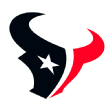
Houston Texans
Best move: Trading two first-round picks to draft Clemson quarterback Deshaun Watson. The Texans went all-in to try to find their future franchise quarterback, by moving up 13 spots to draft Watson. Although it might be risky, given what they gave up, the price wasn’t nearly as high as what the Chicago Bears and Kansas City Chiefs paid earlier in the draft to select quarterbacks. Watson might not open the season as the starting quarterback -- general manager Rick Smith and head coach Bill O’Brien said Tom Savage is the starter -- but Houston hopes this pick will eventually stop the quarterback carousel the Browns have had since the franchise’s first season.
Riskiest move: Waiting until the fourth round to select an offensive tackle. The Texans took Julién Davenport with the 130th overall pick, and he will need some work before he is ready to start at right tackle. This was a weak draft class for offensive linemen, but Houston might regret not finding a way to take a right tackle earlier in the draft, given the struggles the group had down the stretch last season. -- Sarah Barshop
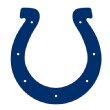
Indianapolis Colts
Best move: No offense to safety Malik Hooker, the Colts’ first-round pick, but second-round pick Quincy Wilson was the best move. Drafting him was not only the best move but also the necessary move, when you take into account how badly the Colts need help at cornerback. Wilson will be given every opportunity to start with veteran Vontae Davis. Wilson also fits the description of the type of cornerback general manager Chris Ballard is looking for, being tall and physical.
Riskiest move: The selection of defensive lineman Grover Stewart from Albany State in the fourth round. The Colts are in a transition period as they remake their defense, and it might take longer for Stewart to adapt to playing in the NFL after playing at a Division II program in college. -- Mike Wells
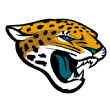
Jacksonville Jaguars
Best move: Taking OT Cam Robinson in the second round was the best thing the Jaguars could have done to help first-round pick Leonard Fournette succeed. The Jaguars have been the NFL’s worst rushing team from 2012 to 2016 (92.1 yards per game), and the offensive line bears a large part of the blame. Taking Fournette and not upgrading the line wouldn’t make any sense, and Robinson was arguably the top offensive lineman in the draft. Robinson is huge -- 6-foot-6, 310 pounds -- with very good feet, and he’ll start out at left tackle. Don’t be surprised, however, if he moves inside to guard for a year before sliding back outside permanently.
Riskiest move: WR Dede Westbrook is the team’s biggest gamble since it traded up to select WR Justin Blackmon fifth overall. Blackmon has three arrests, is suspended indefinitely after failing at least three drug tests and hasn’t played since midway through the 2013 season. The Jaguars took Westbrook in the fourth round, so the risk isn’t at the same level, but it’s still significant because of Westbrook’s two arrests for domestic violence. Although charges were not pursued and dismissed, those character concerns caused him to tumble down draft boards. The Jaguars have told him he has no margin for error. The team has stayed away from drafting players with character concerns under GM Dave Caldwell -- though it did bring in DE Greg Hardy for a visit last summer -- but this is by far his riskiest move. -- Mike DiRocco
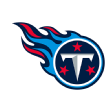
Tennessee Titans
Best move: Let’s not make it one guy; let’s make it one theme. The Titans moved to the next level to help quarterback Marcus Mariota, spending premium picks on talented pass-catchers who are different from what the team previously had. No. 5 pick Corey Davis is a perimeter receiver who can draw attention and produce long runs after the catch. No. 72 selection Taywan Taylor is a quick slot guy who will also be able to make plays after pulling in well-placed passes. The 100th overall pick, tight end Jonnu Smith, will be asked to block a lot early on. He’s a smooth, fast guy who should be a receiving threat as well.
Riskiest move: Is Davis a risk? The Titans are banking on him converting production at a lesser level of college into NFL performance. He looks the part and has shown the skills, but many of the guys he was running through after the catch were inferior, overmatched athletes. The Titans had their choice of the top receiver in the draft and ranked him above Mike Williams and John Ross, who also went inside the top nine. Time will tell if they made the right call, of course, and I like the pick. But there is a tinge of uncertainty before Davis gets started. -- Paul Kuharsky
AFC West

Denver Broncos
Best move: The best move could be among the riskiest in some ways, but for the Broncos to get Michigan tight end Jake Butt in the fifth round could turn out, with some time and good fortune, to be the steal of the draft for any team. Butt is recovering from his second ACL tear in January in the Orange Bowl. But if healthy, he likely would have been the second or third tight end off the draft board instead of the eighth.
Riskiest move: With the final pick of the three-day draft, the Broncos took the biggest risk by selecting Mississippi quarterback Chad Kelly. Kelly is working his way back from a torn ACL and meniscus that he suffered in November, and he has had plenty of off-the-field issues. He had his invitation to the scouting combine rescinded, was dismissed from Clemson and has had several incidents that got the attention of NFL talent evaluators, including being involved in a brawl at his brother’s prep football game. -- Jeff Legwold
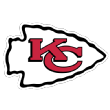
Kansas City Chiefs
Best move: The Chiefs identified a quarterback who they believe can be a franchise-type player and then went up 17 spots in the first round to get Patrick Mahomes of Texas Tech. The move was overdue for a franchise that hadn’t drafted a quarterback in the first round since 1983. The time was right for the Chiefs to try to secure their QB future past Alex Smith, who turns 33 in May and has two more seasons on his contract. The Chiefs don’t have to rush Mahomes into the lineup because of Smith’s presence. They can be patient with his development.
Riskiest move: The Chiefs sacrificed a lot to get Mahomes. They gave up next year’s first-round draft pick plus a third-rounder this year. If Mahomes is a bust, the Chiefs will suffer because of it. They would also have to draft a quarterback with a future premium pick. -- Adam Teicher
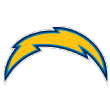
Los Angeles Chargers
Best move: Iowa defensive back Desmond King was considered a Day 2 pick but fell to the Chargers in the fifth round. King provides versatility with an ability to play both cornerback and safety positions. He’ll likely compete for a job as a slot defender on passing downs in new defensive coordinator Gus Bradley’s Cover 3 scheme.
Riskiest move: The Chargers did extensive work on this year’s quarterback draft class but did not select one for a fourth consecutive year. Philip Rivers turns 36 in December, and at some point, the Chargers need to start thinking about a succession plan for the talented signal-caller. Chargers GM Tom Telesco has drafted just one quarterback since he joined the Chargers in 2013: Brad Sorensen, a seventh-round selection in 2013. Sorensen is no longer with the Chargers. -- Eric D. Williams

Oakland Raiders
Best move: Taking Ohio State cornerback Gareon Conley in the first round. He was a top-10 talent who fell into the Raiders’ lap at No. 24 and enables them to address the 24th-ranked pass defense. Conley could replace Sean Smith on the outside and then play in the slot in nickel, which would allow Smith to play outside and pick up safety help over the top.
Riskiest move: Yes, selecting Conley. He is facing a rape accusation -- hence his slipping draft stock -- and is scheduled to meet with police on Monday. He maintains his innocence, and the Raiders believe that they have done their due diligence on him and that he will be cleared. Still, there is risk involved that he might face charges. -- Paul Gutierrez
NFC East
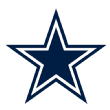
Dallas Cowboys
Best move: The Cowboys believe Michigan DE Taco Charlton is a great fit for their scheme and for Rod Marinelli. His sack total increased each year, topping out at 9.5. But this is more about the plan. The Cowboys followed what they wanted to do. Their strategy was to take a pass-rusher first because they did not believe that there would be quality when they picked in the second round, compared to the quality of cornerbacks who would be available.
Riskiest move: Michigan CB Jourdan Lewis has a pending court date for a misdemeanor domestic violence charge. Although the Cowboys investigated the claim and believe he will prevail, nothing is guaranteed. If he is cleared and does not face any NFL penalty, the Cowboys have a potential starter as they look to rework their secondary after losing four players in free agency. -- Todd Archer

New York Giants
Best move: Second-round DT Dalvin Tomlinson filled a need and gives the Giants an impenetrable wall in the middle of their defense. Tomlinson next to Damon Harrison will make offensive coordinators think twice before trying to run the ball against that defensive line, which also includes solid run defenders Jason Pierre-Paul and Olivier Vernon.
Riskiest move: The Giants invested a third-round pick in QB Davis Webb, who lost his starting job in college, transferred and had a losing record at Cal. Can he be the eventual successor to Eli Manning? The jury is out on whether he will be worth the risk. Webb does have skills -- general manager Jerry Reese said he had the best arm in the draft -- along with a work ethic and the mental capacity that gives him a chance. -- Jordan Raanan

Philadelphia Eagles
Best move: Drafting Tennessee DE Derek Barnett with the 14th overall pick. The Eagles landed a player whom they’ve been high on for months, choosing to trust the tape rather than be scared off by less-than-desirable combine numbers. Jim Schwartz’s defense doesn’t work without an organic pass rush, and Barnett knows how to get to the quarterback.
Riskiest move: Selecting the injured Sidney Jones in the second round. This has the potential to be a great pick. If Jones fully recovers from his Achilles injury, the Eagles will have gotten one of the best cornerbacks in the class at a bargain price. The flip side is that Jones never recaptures his form. It’s boom or bust with this selection. -- Tim McManus

Washington Redskins
Best move: Washington selected defensive players with each of its first four picks, finding two who should provide an immediate impact in lineman Jonathan Allen and linebacker Ryan Anderson. Adding so many young players will do something the Redskins haven’t done for a while: set up the defense for possible future success.
Riskiest move: The Redskins selected two players who are coming off surgeries that could impact their first seasons. Corner Fabian Moreau won’t be ready until late August or early September after surgery on a torn pectoral muscle. Safety Montae Nicholson needed surgery in March to repair a torn labrum, but he said he’d be ready for training camp. -- John Keim
NFC North

Chicago Bears
Best move: If Mitchell Trubisky becomes the Bears' franchise quarterback, general manager Ryan Pace will look like a genius for moving up one spot to take him. The Bears have been without a marquee quarterback since Sid Luckman in the 1940s. The Jay Cutler era is over, and fans want to move forward. Trubisky could be the missing piece, as long as he develops properly.
Riskiest move: Every ... single ... pick, including Trubisky. If Trubisky is a bust -- he started only one year at North Carolina -- Pace is toast. Second-round tight end Adam Shaheen played Division II. So did fifth-round guard Jordan Morgan. Chicago traded up for Alabama safety Eddie Jackson in Round 4, but Jackson broke his leg last year. Later in the fourth round, Chicago drafted running back Tarik Cohen from FCS school North Carolina A&T. I’m going to lie down. -- Jeff Dickerson

Detroit Lions
Best move: Lions general manager Bob Quinn made his first-round pick a smart, safe selection at the team’s biggest position of need. Jarrad Davis is a high-character player with good closing speed and intelligence. Regardless of whether he becomes a star, he has the skills to be a consistent, strong starter in the league for a decade or so. He also has strong leadership qualities, something Quinn looks for in first-pick selections.
Riskiest move: Quinn spent more time studying tape of Jalen “Teez” Tabor than of any prospect he could remember, and for a former scout, that’s saying something. But taking a corner with a 4.68 40-yard dash at No. 53 is at least mildly concerning. Quinn has been pretty prudent in taking picks with high floors and reasonable ceilings throughout his first two drafts, but Tabor has a bit more boom or bust to him. -- Michael Rothstein
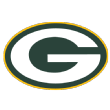
Green Bay Packers
Best move: Unless T.J. Watt ends up becoming the next J.J. Watt, the Packers' best move was the decision to pass on the Wisconsin pass-rusher and trade out of the first round. That netted them two potential impact players on defense: second-round cornerback Kevin King and fourth-round outside linebacker Vince Biegel. Those were the two picks they got back from the Browns in the trade from No. 29 overall.
Riskiest move: The Packers waited until Day 3 to address perhaps their thinnest position: running back. At least they doubled up and took two of them: Jamaal Williams of BYU in the fourth round and Aaron Jones in the fifth. Had they taken a running back earlier, perhaps the Packers wouldn’t have had to take a second one as an insurance policy. -- Rob Demovsky

Minnesota Vikings
Best move: Few expected Dalvin Cook to still be available with the 41st overall pick, and the Vikings' decision to move up in the second round could add an impressive playmaker to an offense that badly needs one. Cook can contribute as a running back and a receiver, and he'll fit well with Pat Shurmur's West Coast offense, provided he can leave behind the people that caused him to get into some trouble at Florida State.
Riskiest move: We'll use this space to focus more on a move the Vikings didn't make. Although the tackle position was thin in this draft, it's worth noting that the Vikings didn't take one in the first six rounds, using a fourth-round pick on Michigan linebacker Ben Gedeon instead of a tackle such as Bucknell's Julien Davenport or USC's Zach Banner. The Vikings improved the tackle position in free agency with Riley Reiff and Mike Remmers, but they're an injury away from using a player such as T.J. Clemmings again in 2017. -- Ben Goessling
NFC South

Atlanta Falcons
Best move: Selecting edge rusher Takkarist McKinley out of UCLA in the first round. The Falcons traded up from No. 31 to No. 26 for McKinley, knowing he was coveted by other teams behind them. McKinley has the speed off the edge to be a great complement to reigning NFL sacks leader Vic Beasley Jr. Suddenly, the Falcons have a rather formidable nickel rush group, when you include guys such as Grady Jarrett, Adrian Clayborn and newcomer Dontari Poe, who has the strength to push the pocket. McKinley also plays with great emotion, which he showed on draft night when he cursed on stage during a live interview with Falcons legend and NFL Hall of Famer Deion Sanders. If McKinley channels his emotion the right way -- toward getting after quarterbacks -- he could be a great asset to the defense for a long time.
Riskiest move: Drafting offensive guard Sean Harlow out of Oregon State in the fourth round. The Falcons have a void at right guard after starter Chris Chester decided to retire. If they were looking for a replacement via the draft, Harlow probably isn’t the guy. All 37 of his starts in college came at left and right tackle. He is willing to make the transition to guard and practiced it some in college, but the transition isn’t all that easy. Just ask Wes Schweitzer, the Falcons’ sixth-round pick from a year ago who made the switch from tackle to guard and was inactive for every game. -- Vaughn McClure

Carolina Panthers
Best move: Selecting Stanford’s Christian McCaffrey with the eighth overall pick. He offers a lot to a team looking to evolve its offense to depend less on quarterback Cam Newton as a runner. McCaffrey gives the Panthers so many options as tailback and receiver -- not to mention he can return kicks -- that he was too good to pass up.
Riskiest move: This isn’t to suggest that second-round pick Curtis Samuel, a wide receiver out of Ohio State, is a huge risk. It just seemed an odd pick, in that he can play receiver and running back like McCaffrey. But the risk might be worth the reward here when you look at what Carolina wants to do offensively. -- David Newton

New Orleans Saints
Best move: This is a no-brainer: CB Marshon Lattimore with the 11th pick. He filled one of the Saints' two most glaring needs, and the Saints had him ranked among their top four players overall (a ranking with which many draft analysts agreed). Lattimore has a history of hamstring issues that adds some risk, but obviously scouts felt comfortable enough with his medical evaluations. Best of all, the Saints' patience paid off, as they resisted the temptation to trade up for him and the temptation to trade a valuable draft pick for a veteran corner such as the Patriots’ Malcolm Butler before the draft instead.
Riskiest move: DE Al-Quadin Muhammad in Round 6 was a character risk, considering he was dismissed from Miami for off-the-field issues. But they didn't invest heavily in him. The move that opened the Saints to the most second-guessing was trading up for RB Alvin Kamara in Round 3. The Saints obviously have a vision and a high grade on the dual threat runner/receiver, whom they see in a role similar to past Saints such as Darren Sproles and Reggie Bush. But you can argue that it was a luxury pick and they could have used that valuable resource to help the defense instead. -- Mike Triplett
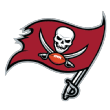
Tampa Bay Buccaneers
Best move: O.J. Howard, whom many teams had on their boards going among the top 10 picks. He fills a need for a complete tight end who can block and catch and can be paired with H-back Cameron Brate. Howard averaged 157.0 receiving yards across two CFP national championships.
Riskiest move: Trading a fourth-round pick to select a player in the third round with a torn ACL, linebacker Kendell Beckwith, was interesting. He’s a middle linebacker, and the Bucs are looking at him to play strong side. Watch his highlights, though; he’s downhill and could be a great fit for Mike Smith’s defense. Plus, the Bucs seem to know what they’re doing with these linebackers out of LSU. -- Jenna Laine
NFC West

Arizona Cardinals
Best move: Moving up to draft Budda Baker in the second round might end up paying dividends for the Cardinals in the long term. He’s versatile -- essentially a four-in-one defensive back -- who can get on the field as a rookie. Plus, should Tyrann Mathieu get hurt again, Arizona will have a safety similar to Mathieu to slide into Mathieu’s role.
Riskiest move: Chad Williams, the wide receiver out of Grambling whom the Cardinals picked in the third round, comes with the most risk for Arizona because of the adjustment awaiting him. Facing off against NFL defensive backs on a daily basis will be quite a shift from competing against FCS secondaries. -- Josh Weinfuss
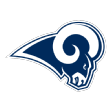
Los Angeles Rams
Best move: The Rams identified Gerald Everett as a second-round target early and were so convinced by him that they were willing to move back seven spots, from No. 37 to No. 44, which netted an additional third-round pick. Everett gives the Rams a downfield threat at tight end, which is especially critical given how much value Sean McVay got out of tight ends in Washington.
Riskiest move: The Rams took a handful of players from smaller universities who did not get a ton of reps against the best collegiate athletes. That includes Everett, who came out of South Alabama, and two others from Eastern Washington, third-round slot receiver Cooper Kupp and fourth-round outside linebacker Samson Ebukam. All three easily could play a lot this coming season. -- Alden Gonzalez
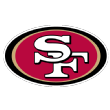
San Francisco 49ers
Best move: Trading down from No. 2 to No. 3 and taking DE Solomon Thomas. Adding Thomas, whom many considered one of the safest picks in the draft, is icing on the cake after the trade the Niners made with the Bears. The 49ers moved down one spot and picked up two third-round choices and a fourth-round pick in return. They used that fourth-rounder to move back into the first and now have some additional picks in 2018 that they can use to help acquire their franchise quarterback, if needed.
Riskiest move: Moving up to draft LB Reuben Foster. The Niners viewed Foster as one of the three best players in the draft, and based purely on talent, many others had him in that range. But Foster slipped to No. 31 because of a lingering shoulder injury as well as a negative drug test for a diluted sample at the scouting combine. If Foster is healthy and stays on track, he could be the steal of the draft. If not, this was a missed opportunity with a valuable draft choice. -- Nick Wagoner

Seattle Seahawks
Best move: One reason trading Richard Sherman would've made little sense is that the Seahawks are thin at cornerback. In CB Shaquill Griffin (6 feet, 32 3/8-inch arms), they get a player who fits with their physical preferences. And he tested well at the combine, running a 4.38 40. The Seahawks’ biggest strength during the Pete Carroll era has been developing defensive backs. Griffin has a chance to come in and contribute right away.
Riskiest move: General manager John Schneider admitted that concerns about DT Malik McDowell’s effort at Michigan State were warranted. “From a motor standpoint, he knows that he needs to keep going,” Schneider said. McDowell has a high ceiling and a low floor. He had just 1.5 sacks last season. The Seahawks are counting on Carroll to help McDowell reach his potential, and he has a chance to contribute right away as an interior pass-rusher. But there’s no doubt that this was a risky pick. -- Sheil Kapadia
































